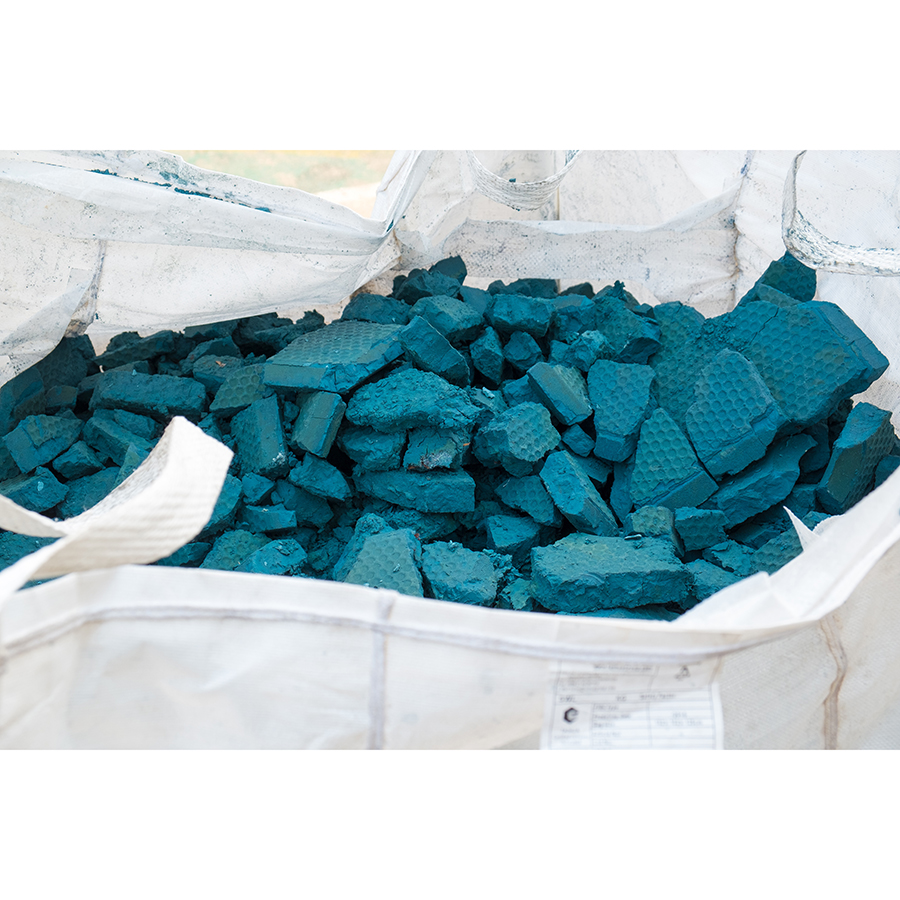
Chamber filter press
A chamber filter press is a mechanical system for solid-liquid separation that operates discontinuously. Depending on the process, either the solid can be isolated as a valuable material or the liquid can be the target product.
The filtration process can take several hours. The suspension is pressed into the chambers and gradually subjected to higher pressures so that the liquid emerges through the filter cloths. The solid particles hardly experience any shear stress, but mainly pressure stress. Once filtration is complete, the filter cake must be detached from the filter cloths. While this process is carried out manually in older systems, modern chamber filter presses have automatic filter cake removal systems. The filter cake accumulates in batches and is often collected in downstream equipment such as an amixon® paste bunker. In the paste bunker, the flake-shaped fragments are crushed and resuspended. They then become paste-like. When sufficient filter cake has been collected in the paste bunker, it fills the amixon® vacuum mixing dryer. There the filter cake is thermally dried. This produces a powder.
In comparison, a peeler centrifuge works continuously. Here, the separating force is generated by high centrifugal acceleration. The suspension is fed evenly into the rotating bowl. The liquid passes through a sieve or membrane to the outside, while the solids are retained. The filter cake is removed at regular intervals using a peeling tool. In addition to pressure and centrifugal forces, shear forces also act on the particles. This process enables almost continuous operation, but is generally associated with greater mechanical stress on the solids. This is followed by thermal drying with an amixon vacuum contact dryer.
Other discontinuously or continuously operating systems are pressure nutsche filters, rotary pressure filters, rotary vacuum filters and vacuum belt filters. They are also characterised by a comparatively particle-friendly mode of operation. The selection of a suitable separation process depends on the type of solids. The quantities produced also play a major role.
As a rule, almost all drying processes are completed with a vacuum contact dryer.
